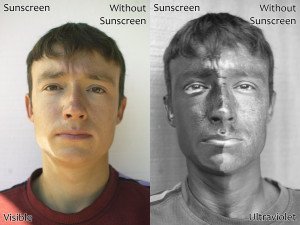5 Ways to Protect Your Skin from the Sun
It’s not really summer until you’ve soaked up the sun at the beach, poolside or during some other outdoor activity. However, no matter what time of year it is, it’s important to protect your skin from the harmful ultraviolet (UV) radiation found in sunlight. Exposure to UV radiation is the number-one cause of skin cancer, which is the most common type of cancer diagnosed in the United States. Fortunately, most types of skin cancer can be prevented or successfully treated if they are found early. Because most skin cancer is caused by excessive and unprotected exposure to UV radiation, here are a few simple steps you can take to help protect you and your family:
1.) Clothing: Studies have shown that clothing is the most important protector against the sun. The more skin you cover, the better. Unfortunately, at the beach or pool, this isn’t always such a great option. However, there are great surf shirts, rash guards and other clothes which are equivalent to SPF 50 and look great.
- Surf shirts: Long sleeves are better than short sleeves. But also make sure they are SPF sun protective. These are especially a great option for young children that are difficult to apply sunscreen to.
- Hats: The wider the brim the better, but even a baseball cap at least covers the top of your head and nose.
- Sunglasses: Protect your eyes. Don’t forget about UV damage to them too! If your eyes are exposed to excessive amounts of UV radiation over a short period of time, you are likely to experience an effect called photokeratitis. Like a “sunburn of the eye”, photokeratitis may be painful and include symptoms such as red eyes, a foreign body sensation or gritty feeling in the eyes, extreme sensitivity to light and excessive tearing.
2.) Be Aware of Light Reflection: Always keep in mind that water, snow and sand can reflect up to 85% of the sun’s rays.
3.) Time of Day: 10-4 pm is the worst time to be in the sun. But if you have no other choices then try to stand in the shade. Standing in the shade works like an SPF because it prevents you from getting full sun exposure.
4.) Sunscreen:
- Use an SPF 30 or above with both UVA and UVB protection. Apply sunscreen 20 minutes before going outdoors and reapply every 2 hours when in the sun, or every 45 minutes if you’re in water.
- Replace your sunscreen every week to retain effectiveness.
5.) Medications: Watch out for medications that increase sun sensitivity, such as – NSAID (motrin, ibuprofen, naproxen), Retin A, some Birth control pills, some Antidepressants and some Antibiotics
Early detection
Examining your skin regularly can help you find skin cancer early. Perform an examination in front of a full-length mirror in a brightly lit room. It helps to have another person check the scalp and back of the neck. With melanoma, the first sign is often a change in the size, shape, or color of an existing mole. It also may appear as a new or abnormal-looking mole. Most moles are not cancerous, but if you notice a mole that is changing, have it checked by a dermatologist.
There is some good news, however. If you have noticed signs of premature aging or sun damage on your skin, Natural Image OC can help. Procedures such as dermabrasion, laser and light therapy, chemical peels, soft-tissue fillers, among others, can easily and non-invasively rejuvenate skin and take years off your appearance. Have you noticed signs of sun-damaged skin? Contact Natural Image OC today.
 contact us today
contact us today